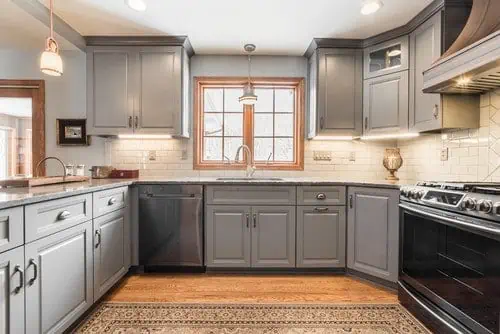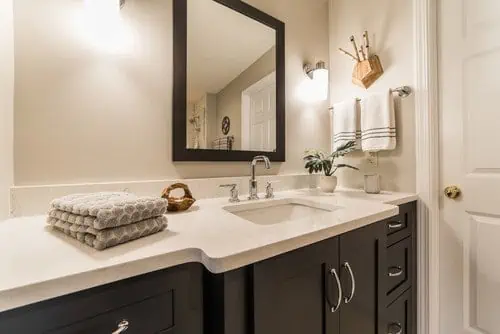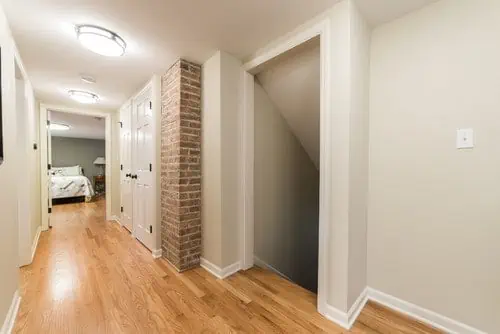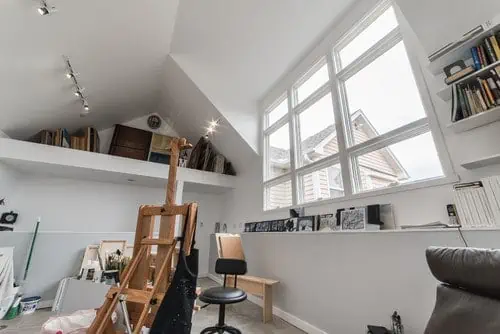Most of us are aware of the importance of setting healthy boundaries to ensure our overall well-being. It’s helpful to think of boundaries less in terms of restriction and more in terms of protection. You may not think of boundaries when it comes to remodeling your home but having clear boundaries can make the remodeling experience much less stressful and more enjoyable. Here is what you should know about establishing your remodeling boundaries.
Let’s look at three areas where having healthy boundaries can really pay off when you decide to remodel your Fox Valley kitchen or bathroom. We’ll take a quick look at boundaries for the scope of your project; your budget; and your working relationship with your remodeler.
Project Scope Boundaries
When you’re first beginning to plan a remodel or even a room addition, you may feel as if you’re starting with a blank sheet of paper. That’s great for creativity, but without some kind of boundaries, it’s easy to bite off more than you can chew.
So, before you get too far into your dreams and ideas, take some time to think about what you really want to accomplish. Why are you looking at remodeling in the first place? Many homeowners find it helpful to think in terms of “Must- Have” features, “Nice-to-Have” features, and “Splurge” features. You may choose to do all of the items on your list but thinking about them in these terms helps remind you that you are in control of what gets done.
Another aspect of setting boundaries for the scope of your project is that you get to determine how much disruption you want to handle. Let’s face it: remodeling is a somewhat disruptive activity. You are the one who gets to decide how much disruption you’re willing to put up with at a given time. Do you want to remodel your kitchen and your bathroom at the same time? The upside to that approach is that when the projects are done, you won’t have any more interruptions and you’ll be able to enjoy your new space. On the other hand, it may be more comfortable to space things out a bit and take things one at a time.
Budget Boundaries
We’ve been doing remodeling work since 1975, and in that entire time, we’ve never had a client tell us, “Money is no object. We don’t care what it costs.” The fact is that money does matter. That’s why setting boundaries for your budget is important. You’ll want to set realistic limits for what you want to accomplish. If you set your budget too high, you can end up spending more than you want (or need) to. But setting your budget too low can also be a problem. You may not end up with what you really want. If that happens, the fact that you “met your budget” isn’t much comfort. That means that your budget needs to reflect what you can really afford in order to get the results you want. But you won’t want to be so rigid with your budget that it keeps you from accomplishing your remodeling goals.
One of the advantages of working with a design-build remodeler is that you’ll have a much better picture of what will be involved to provide the results you want. And that includes having an accurate estimate of the costs.
Remodeler Relationship Boundaries
Both you and your remodeler will want to set boundaries regarding how you work together when the actual remodeling begins. If you have specific requirements about when work can be done and whether or not you need to be in the house at the time, you’ll want to clearly communicate those to your contractor. Similarly, your contractor will want to communicate the “rules of engagement” when he or she is working. You’ll both want to set specific times to discuss progress and/or changes or questions. Setting those things up at the beginning of the process protects both of you—and frees both of you up to fulfill your respective responsibilities.
Firm But Flexible
The whole purpose of setting boundaries is not to be restrictive. It’s to protect you and your remodeler from making assumptions that can cause problems. That’s why the boundaries you set need to be firm (well-defined) enough to be clear, but not so rigid that they inhibit the progress of the work. Whether you’re dealing with the scope of the project, the budget, or the homeowner/contractor relationship, you’ll want guidelines in place that provide direction but allow for a better solution.





